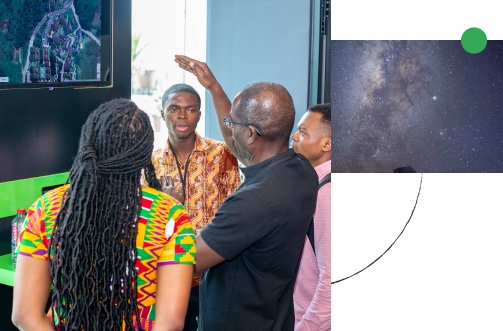
Benoit Dherin
Research Scientist, ML Foundations
& Algorithms
Research Areas
Authored Publications
Sort By
Preview abstract
Modern deep learning algorithms use variations of gradient descent as their main learning methods. Gradient descent can be understood as the simplest Ordinary Differential Equation (ODE) solver; namely, the Euler method applied to the gradient flow differential equation. Since Euler, many ODE solvers have been devised that follow the gradient flow equation more precisely and more stably. Runge-Kutta (RK) methods provide a family of very powerful explicit and implicit high-order ODE solvers. However, these higher-order solvers have not found wide application in deep learning so far. In this work, we evaluate the performance of higher-order RK solvers when applied in deep learning, study their limitations, and propose ways to overcome these drawbacks. In particular, we explore how to improve their performance by naturally incorporating key ingredients of modern neural network optimizers such as preconditioning, adaptive learning rates, and momentum.
View details
Preview abstract
Modern deep learning algorithms use variations of gradient descent as their main learning methods. Gradient descent can be understood as the simplest Ordinary Differential Equation (ODE) solver; namely, the Euler method applied to the gradient flow differential equation. Since Euler, many ODE solvers have been devised that follow the gradient flow equation more precisely and more stably. Runge-Kutta (RK) methods provide a family of very powerful explicit and implicit high-order ODE solvers. However, these higher-order solvers have not found wide application in deep learning so far. In this work, we evaluate the performance of higher-order RK solvers when applied in deep learning, study their limitations, and propose ways to overcome these drawbacks. In particular, we explore how to improve their performance by naturally incorporating key ingredients of modern neural network optimizers such as preconditioning, adaptive learning rates, and momentum.
View details
Preview abstract
A growing body of research has demonstrated that the behavior of large language models can be effectively controlled at inference time by directly modifying their internal states, either through vector additions to their activations or through updates to their weight matrices. These techniques, while powerful, are often guided by empirical heuristics, such as deriving steering vectors from the average activations of contrastive prompts. This work provides a theoretical foundation for these interventions, explaining how they emerge from the fundamental computations of the transformer architecture. Building on the recent finding that a prompt's influence can be mathematically mapped to implicit weight updates (Dherin et al., 2025), we generalize this theory to deep, multi-block transformers. We show how the information contained in any chunk of a user prompt is represented and composed internally through weight vectors and weight matrices. We then derive a principled method for condensing this information into token-independent thought vectors and thought matrices. These constructs provide a theoretical explanation for existing vector- and matrix-based model editing techniques and offer a direct, computationally-grounded method for transmuting textual input into reusable weight updates.
View details
Preview abstract
A growing body of research has demonstrated that the behavior of large language models can be effectively controlled at inference time by directly modifying their internal states, either through vector additions to their activations or through updates to their weight matrices. These techniques, while powerful, are often guided by empirical heuristics, such as deriving ``steering vectors'' from the average activations of contrastive prompts. This work provides a theoretical foundation for these interventions, explaining how they emerge from the fundamental computations of the transformer architecture. Building on the recent finding that a prompt's influence can be mathematically mapped to implicit weight updates Dherin et al. (2025), we generalize this theory to deep, multi-block transformers. We show how the information contained in any chunk of a user prompt is represented and composed internally through virtual weight vectors and virtual weight matrices. We then derive a principled method for condensing this information into token-independent thought vectors and thought matrices. These constructs provide a theoretical explanation for existing vector- and matrix-based model editing techniques and offer a direct, computationally-grounded method for transforming textual input into reusable weight updates.
View details
Preview abstract
Despite exceptional achievements, training neural networks remains computationally expensive and is often plagued by instabilities that can degrade convergence. While learning rate schedules can help mitigate these issues, finding optimal schedules is time-consuming and resource-intensive. This work explores theoretical issues concerning training stability in the constant-learning-rate (i.e., without schedule) and small-batch-size regime. Surprisingly, we show that the order of gradient updates affects stability and convergence in gradient-based optimizers. We illustrate this new line of thinking using backward-SGD, which processes batch gradient updates like SGD but in reverse order. Our theoretical analysis shows that in contractive regions (e.g., around minima) backward-SGD converges to a point while the standard forward-SGD generally only converges to a distribution. This leads to improved stability and convergence which we demonstrate experimentally. While full backward-SGD is computationally intensive in practice, it highlights opportunities to exploit reverse training dynamics (or more generally alternate iteration orders) to improve training. To our knowledge, this represents a new and unexplored avenue in deep learning optimization.
View details
Preview abstract
Deep residual architectures, such as ResNet and the Transformer, have enabled models of unprecedented depth, yet a formal understanding of why depth is so effective remains an open question. A popular intuition, following Veit et al. (2016), is that these residual networks behave like ensembles of many shallower models. Our key finding is an explicit analytical formula that verifies this ensemble perspective, proving that increasing network depth is mathematically equivalent to expanding the size of this implicit ensemble. Furthermore, our expansion reveals a hierarchical ensemble structure in which the combinatorial growth of computation paths leads to an explosion in the output signal, explaining the historical necessity of normalization layers in training deep models. This insight offers a first-principles explanation for the historical dependence on normalization layers and sheds new light on a family of successful normalization-free techniques like SkipInit and Fixup. However, while these previous approaches infer scaling factors through optimizer analysis or a heuristic analogy to
Batch Normalization, our work offers the first explanation derived directly from
the network’s inherent functional structure. Specifically, our Residual Expansion
Theorem reveals that scaling each residual module provides a principled solution to taming the combinatorial explosion inherent to these architectures. We further show that this scaling acts as a capacity controls that also implicitly regularizes the model’s complexity.
View details
Preview abstract
Despite exceptional achievements, training neural networks remains computationally expensive and is often plagued by instabilities that can degrade convergence. While learning rate schedules can help mitigate these issues, finding optimal schedules is time-consuming and resource-intensive. This work explores theoretical issues concerning training stability in the constant-learning-rate (i.e., without schedule) and small-batch-size regime. Surprisingly, we show that the order of gradient updates affects stability and convergence in gradient-based optimizers. We illustrate this new line of thinking using backward-SGD, which processes batch gradient updates like SGD but in reverse order. Our theoretical analysis shows that in contractive regions (e.g., around minima) backward-SGD converges to a point while the standard forward-SGD generally only converges to a distribution. This leads to improved stability and convergence which we demonstrate experimentally. While full backward-SGD is computationally intensive in practice, it highlights opportunities to exploit reverse training dynamics (or more generally alternate iteration orders) to improve training. To our knowledge, this represents a new and unexplored avenue in deep learning optimization.
View details
Preview abstract
Deep residual architectures, such as ResNet and the Transformer, have enabled models of unprecedented depth, yet a formal understanding of why depth is so effective remains an open question. A popular intuition, following Veit et al. (2016), is that these residual networks behave like ensembles of many shallower models. Our key finding is an explicit analytical formula that verifies this ensemble perspective, proving that increasing network depth is mathematically equivalent to expanding the size of this implicit ensemble. Furthermore, our expansion reveals a hierarchical ensemble structure in which the combinatorial growth of computation paths leads to an explosion in the output signal, explaining the historical necessity of normalization layers in training deep models. This insight offers a first principles explanation for the historical dependence on normalization layers and sheds new light on a family of successful normalization-free techniques like SkipInit and Fixup. However, while these previous approaches infer scaling factors through optimizer analysis or a heuristic analogy to Batch Normalization, our work offers the first explanation derived directly from the network's inherent functional structure. Specifically, our Residual Expansion Theorem reveals that scaling each residual module provides a principled solution to taming the combinatorial explosion inherent to these architectures. We further show that this scaling acts as a capacity controls that also implicitly regularizes the model's complexity.
View details
Preview abstract
One of the most striking features of Large Language Models (LLMs) is their ability to learn in-context. Namely at inference time an LLM is able to learn new patterns without any additional weight update when these patterns are presented in the form of examples in the prompt, even if these patterns were not seen during training. The mechanisms through which this can happen are still largely unknown. In this work, we show that the stacking of a self-attention layer with an MLP, allows the transformer block to implicitly modify the weights of the MLP layer according to the context. We argue through theory and experimentation that this simple mechanism may be the reason why LLMs can learn in-context and not only during training. Specifically, we show how a transformer block implicitly transforms a context into a low-rank weight-update of its MLP layer.
View details
Preview abstract
Deep residual architectures, such as ResNet and the Transformer, have enabled models of unprecedented depth, yet a formal understanding of why depth is so effective remains an open question. A popular intuition, following Veit et al. (2016), is that these residual networks behave like ensembles of many shallower models. Our key finding is an explicit analytical formula that verifies this ensemble perspective, proving that increasing network depth is mathematically equivalent to expanding the size of this implicit ensemble. Furthermore, our expansion reveals a hierarchical ensemble structure in which the combinatorial growth of computation paths leads to an explosion in the output signal, explaining the historical necessity of normalization layers in training deep models. This insight offers a first-principles explanation for the historical dependence on normalization layers and sheds new light on a family of successful normalization-free techniques like SkipInit and Fixup. However, while these previous approaches infer scaling factors through optimizer analysis or a heuristic analogy to
Batch Normalization, our work offers the first explanation derived directly from
the network’s inherent functional structure. Specifically, our Residual Expansion
Theorem reveals that scaling each residual module provides a principled solution to taming the combinatorial explosion inherent to these architectures. We further show that this scaling acts as a capacity controls that also implicitly regularizes the model’s complexity.
View details
